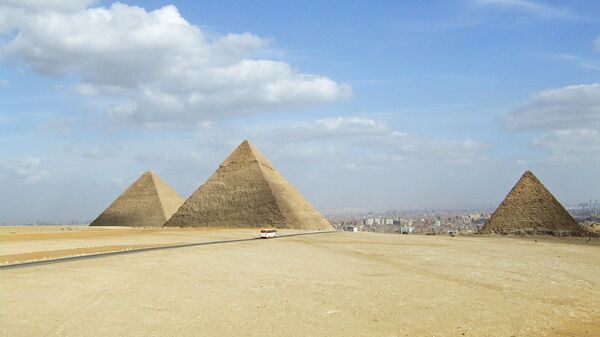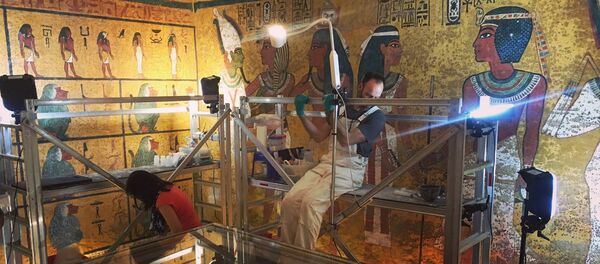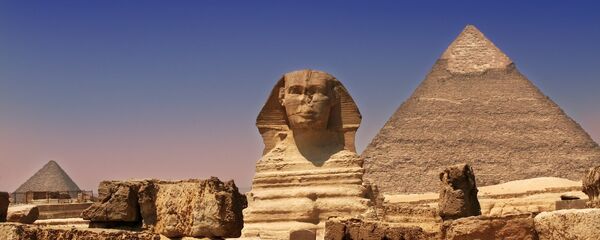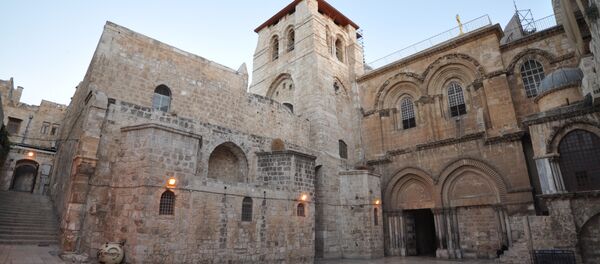In the tomb, diggers found a box containing four canopic jars, each ritually filled with human organs: liver, lungs, intestines and stomach. Mummy wrappings were also found in the box, but they were poorly preserved and the actual body was nowhere to be found.
The Egyptian Ministry of Antiquities issued a statement that they believe the tomb and the organs to belong to Ameny Qemau's daughter Hatshepset. They also found the remains of a sarcophagus, as well as a hieroglyphic inscription bearing Ameny Qemau's name.
"The inscriptions are typical for such boxes in the Second Intermediate Period [the period during which Ameny Qemau lived] and belong on the side [of the box] facing east," Brown University egyptologist James Allen told Live Science.
"[The top line reads] "Neith, extend your arms over the Duamutef who is in you." Duamutef is the god associated with the canopic jar for the stomach [while] Neith is the goddess charged with protecting it [the jar]."
Another line reads "Venerated with Neith, King's daughter Hatshepset," according to Allen. "I presume Hatshepset was a daughter of Ameny Qemau."
Also speaking to Live Science, University of Bristol archaeologist Aidan Dodson noted something unusual about Hatshepset's tomb. "The pyramid is not of a type appropriate to a princess. It must therefore have been built for a king, but then usurped for her burial," he said.
"[The] presence of the Ameny Qemau text suggests that he may have usurped the pyramid built for his predecessor for the interment of one of his daughters, as there is no reason why he should have built two pyramids of his own."
Ameny Qemau is shrouded in relative mystery, with few things known about him save for his tomb and name (and even that is controversial). The pyramid where he is interred was discovered in 1957, long since pillaged by tomb robbers.
His pyramid is the oldest smooth-sided pyramid ever discovered, leading archaeologists to believe that it may have been the first attempt to build such a thing. Ameny Qemeau's tomb is about 1,900 feet away from the one believed to belong to his daughter.
"All the discovered parts of the pyramid are in very good condition and further excavation is to take place to reveal more parts," said the Ministry of Antiquities in a statement.
The tomb was discovered in Dahshur, a well-preserved necropolis of important figures from ancient Egypt about 25 miles south of Cairo. After the Giza Pyramid complex and the Valley of Kings, it is probably the most famous of the resting places for the pharaohs. Its most recognizable landmark is the 341-foot Red Pyramid, the third largest surviving pyramid in Egypt. It was built by Sneferu, a pharaoh who reigned 800 years before Ameny Qemau.





